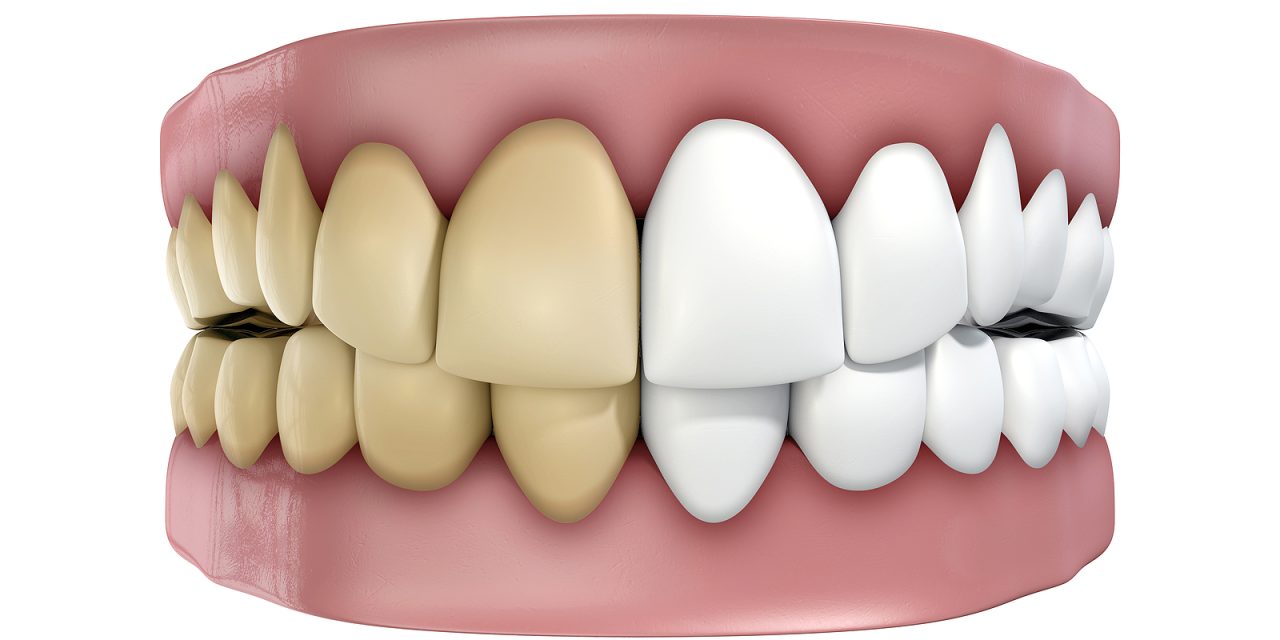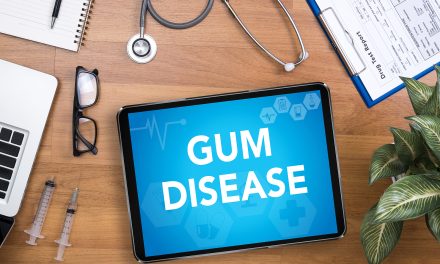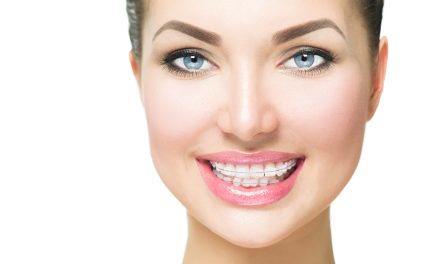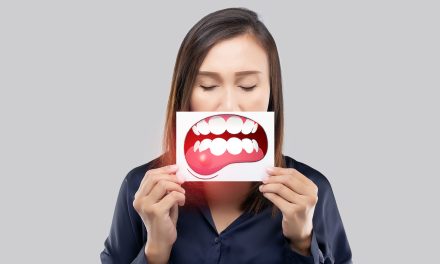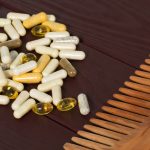Brightening a smile affected by stained teeth can significantly enhance one’s self-confidence. Understanding the underlying causes of tooth discoloration, ranging from dietary habits to intrinsic factors within the tooth structure is crucial. Professional treatments and at-home remedies offer a spectrum of solutions for those seeking to whiten their teeth. Each method, however, carries its own set of considerations related to effectiveness, cost, and potential sensitivity issues.
Embarking on a teeth whitening journey requires appreciating the balance between cosmetic outcomes and oral health. Daily oral hygiene practices, lifestyle adjustments, and dietary choices are pivotal in maintaining the results of any whitening procedure. Moreover, individuals must be informed about the potential side effects and longevity of their whitening choices to set realistic expectations and achieve satisfactory results.
Key Takeaways
- Teeth whitening options vary in effectiveness, cost, and potential for sensitivity.
- Maintaining oral health and lifestyle choices is essential to preserve whitening results.
- Being informed about side effects and longevity of whitening aids in realistic expectations.
Understanding Tooth Discoloration
Tooth discoloration can arise from various sources, broadly classified into extrinsic and intrinsic stains. Extrinsic stains appear on the outer layer of the tooth and the enamel and result from external factors. Common contributors include:
- Beverages: Coffee, tea, and red wine have intense color pigments called chromogens that attach to the enamel.
- Foods: Certain fruits and vegetables, like apples and potatoes, can also cause stains.
- Tobacco Use: Tar and nicotine in tobacco create stubborn stains.
Intrinsic stains are more profound and affect the inner structure of the tooth, the dentin, making them more challenging to remove. These stains may be due to:
- Aging: As one age, the enamel thins, revealing the naturally yellow hue of dentin.
- Internal Factors: Certain medications, trauma, and decay can alter the color from within.
Identifying the type of discoloration is essential, as the approach for whitening teeth varies. For instance, bleaching may be effective for extrinsic yellowing but less for intrinsic conditions. Additionally, prevention plays a key role. Regular oral hygiene can diminish the effect of tannin-rich foods and drinks while quitting tobacco can significantly reduce the risk of stains. However, some intrinsic factors are unavoidable and may require professional dental treatment.
The Science of Teeth Whitening
Teeth whitening is a method used to restore the natural color of teeth by removing surface stains and altering the intrinsic color. The two main compounds used in the whitening process are hydrogen peroxide and carbamide peroxide. These compounds are the bleaching agents that penetrate the enamel and reach the dentin layer beneath, where most discolorations occur.
The active ingredient, typically hydrogen peroxide or carbamide peroxide, breaks into oxygen radicals. These radicals engage in a chemical reaction with the discolored molecules inside the teeth, breaking the bonds that hold these discolorations together.
- Hydrogen Peroxide is a potent oxidizing agent that acts quickly in whitening.
- Carbamide Peroxide: Contains hydrogen peroxide in a lower concentration and urea, usually requiring a longer duration to whiten teeth.
The whitening process can be performed through in-office procedures or at-home treatments. Professional treatments typically utilize higher concentrations of the bleaching agent and often enhance the process with light or heat.
Sensitivity and gum irritation are common side effects due to the peroxide’s penetration into the tooth. Quality products and professional supervision are advised to minimize risks and achieve the desired outcome effectively.
In summary, the science behind teeth whitening leverages the power of oxidizing agents to improve the aesthetics of a smile by targeting and breaking down the molecular structure of stains on and within the tooth enamel and dentin.
Professional Whitening Options
Professional teeth whitening options offer practical solutions for removing stains and lightening the color of teeth. These methods typically involve potent whitening gels used by dental professionals to ensure safety and maximize results.
In-Office Whitening Procedures
In-office whitening procedures provide immediate results, typically in about an hour. During the procedure, a dentist applies a high-concentration whitening gel directly to the teeth. A particular light or laser may be used to accelerate and enhance the whitening process. The cost of in-office whitening can vary, generally ranging from $300 to $800, and it’s important to note that dental insurance may not cover cosmetic treatments like this. Patients with veneers, fillings, or crowns should consult their dentist, as the whitening process only works on natural tooth enamel, and risks may include temporary tooth sensitivity and gum irritation.
Custom Take-Home Whitening Kits
Custom take-home whitening kits involve the creation of personalized whitening trays by a dentist. These trays are designed to hold the whitening gel against the teeth and are used at home over days or weeks as prescribed. The cost typically ranges between $100 and $400 and may be partially covered by dental insurance if necessary. While take-home kits are convenient, they generally produce results more gradually than in-office whitening. Patients should be aware of potential risks such as tooth sensitivity or gum irritation and follow their dentist’s instructions closely.
At-Home Teeth Whitening Solutions
At-home teeth whitening solutions offer a convenient and cost-effective way of improving one’s smile from the comfort of their home. Principal methods include peroxide-based whitening strips, gels, and more advanced trays and LED kits.
Whitening Strips and Gels
Whitening strips are thin, flexible pieces of plastic coated in a peroxide-based whitening gel. They are applied directly to the teeth and left in place for a set time as specified in the directions. The cost and effectiveness of whitening strips can vary, making it essential for individuals to research the best options within their budget.
Trays and LED Kits
Whitening trays and LED kits represent a more comprehensive at-home treatment. Users fill a tray with a bleaching gel, which is placed over the teeth. Some kits include an LED light that works to accelerate the bleaching process. It is imperative to follow the provided instructions carefully to avoid overuse, which can lead to tooth sensitivity or damage.
Natural Whitening Methods
In the quest for a brighter smile, many individuals turn to natural solutions to whiten their teeth. These methods often use household ingredients and can be effective without the harsh chemicals in commercial whitening products.
DIY Baking Soda Solutions
Due to its mild abrasive nature, baking soda can gently remove surface stains from teeth. People can create a paste by mixing baking soda with water, or they can mix it with hydrogen peroxide for additional cleaning power. The Cleveland Clinic suggests hydrogen peroxide has natural bleaching properties, making it a potent combination with baking soda for teeth whitening.
To Use:
- Mix 1 part baking soda with two parts water or
- Combine 1 part hydrogen peroxide with two parts baking soda.
Apply the paste to the teeth using a toothbrush, brushing gently in a circular motion for about two minutes, then rinse thoroughly.
Oil Pulling Technique
Oil pulling is a traditional practice that involves swishing oil, such as coconut oil, around the mouth. This technique is believed to pull toxins out of the body, promoting oral health and potentially leading to whiter teeth.
Instructions:
- Place 1-2 teaspoons of coconut oil in the mouth.
- Swish the oil around for 15-20 minutes.
- Spit the oil into a trash can (to avoid clogging pipes).
- Rinse the mouth with warm water.
For best results, performing oil pulling in the morning before eating or drinking is recommended.
Daily Oral Hygiene Practices
Maintaining good oral hygiene is essential for achieving a brighter smile and preventing dental issues. One should adhere to a daily routine that includes the following steps:
- Brushing: Brush teeth at least twice a day with fluoride toothpaste. Fluoride helps reinforce the teeth’s enamel, reducing the chance of cavities and tooth decay. Brush for two minutes to ensure all surfaces are reached.
- Flossing: Use floss daily to remove food particles and plaque from between the teeth that a toothbrush cannot reach. Regular flossing helps prevent gum disease and can aid in keeping the teeth whiter by removing build-up.
- Rinses: Incorporate an antibacterial or whitening mouthwash to help remove tooth stains and clean areas that brushing and flossing may miss.
Recommended Products:
| Product Type | Purpose |
|---|---|
| Toothpaste | To clean and apply fluoride to the teeth |
| Floss | To clean between the teeth and below the gumline |
| Mouth Rinse | To freshen breath and provide extra cleaning |
Key Tips:
- Choose products with the ADA (American Dental Association) seal of approval.
- Replace toothbrushes every 3–4 months or sooner if bristles are frayed.
- Practice gentle circular motions while brushing to avoid harming the gumline.
Adherence to these practices is a stepping stone to maintaining dental health and achieving a whiter smile.
Diet and Lifestyle Adjustments
Changing one’s diet and lifestyle can significantly impact the whiteness and overall health of one’s teeth. Certain foods and beverages are notorious for staining teeth. Specifically, drinks like coffee, tea, red wine, soda, and sports drinks contain tannins or have high acidic content, which can contribute to discoloration.
- Coffee and Tea: Both beverages contain tannins, which can cause staining.
- Red Wine: Known for its intense color, it can leave noticeable stains on teeth.
- Soda and Sports Drinks: High in acids and often colored, these drinks can erode enamel and stain teeth.
To minimize the impact of these substances, it’s advisable to drink water or rinse the mouth after consumption. Drinking through a straw can also help by lessening the contact with the teeth.
In addition to dietary changes, lifestyle practices play a role in tooth discoloration:
- Tobacco Use: Both smoking and chewing tobacco products introduce tar and nicotine into the mouth, which can lead to stubborn stains as well as gum disease.
- Oral Hygiene: Poor oral hygiene can lead to plaque and bacteria buildup, contributing to discoloration and dental health issues.
Incorporating a diet rich in fruits, vegetables, and water can help maintain a healthy oral environment and reduce the likelihood of stains. Crunchy vegetables, for example, can act as natural toothbrushes, helping to keep the teeth clean. Maintaining a robust oral hygiene routine, including regular brushing and flossing, is essential to minimize plaque buildup and reduce the risk of tobacco-induced discoloration and associated diseases.
Dealing with Tooth Sensitivity
Tooth sensitivity can often be an unwelcome companion to the teeth whitening process. Many individuals find that their quest for a brighter smile may increase tooth sensitivity, mainly if the enamel on their teeth is thin or they already have predispositions to sensitivity.
When whitening treatments are used, some people might experience heightened sensitivity due to the penetration of the whitening agents into the tooth structure, which can irritate the nerve. Additionally, gum inflammation can exacerbate the discomfort associated with sensitive teeth.
Here are strategies to manage tooth sensitivity during whitening treatments:
- Adjust Frequency: If using at-home whitening treatments, one may reduce the frequency to alleviate symptoms. Switching to every other day and shortening the duration of each application can provide relief.
- Desensitizing Products: Using desensitizing toothpaste or gels before and after whitening is advisable. These products contain compounds like potassium nitrate, which can help block the transmission of pain signals from the tooth surface to the nerve.
Preventive Measures and Aftercare:
- Fluoride Treatments: Apply fluoride treatments to strengthen enamel and reduce the transmission of sensations.
- Dietary Considerations: Avoid extremely hot or cold foods and beverages that may trigger sensitivity.
- Gentle Oral Hygiene: Brush with a soft-bristled toothbrush and avoid abrasive toothpaste.
- Pain Relievers: Over-the-counter pain relievers may help but should be used cautiously and as a last resort.
If sensitivity persists, one should consult their dentist as it may indicate an underlying issue that requires professional attention. It’s essential to remember not to overuse whitening products as they can damage enamel over time, further increasing sensitivity.
Cosmetic Dentistry Alternatives
If traditional whitening treatments are unsuitable, one can consider cosmetic dentistry alternatives. These methods not only improve the color of teeth but can also enhance their shape and overall appearance.
Veneers and Bonding
Veneers are custom-made, thin shells crafted from porcelain or composite material and designed to cover the front surface of teeth, effectively hiding discoloration and imperfections. They require minimal tooth preparation, and their color can be matched to the individual’s dental health needs.
On the other hand, bonding utilizes a tooth-colored resin that is applied and molded over the stained or damaged tooth. Bonding is a cost-effective solution when compared to veneers. It can be an excellent option for minor cosmetic changes, such as filling a small cavity, without extensive tooth reshaping.
Dental Crowns
In cases where a tooth is significantly discolored or structurally compromised, dental crowns may be recommended. Crowns cover the entire tooth, restoring its shape, size, and strength while improving its appearance. They can be made from various materials, including porcelain, ceramic, or metal. They are instrumental in instances where large fillings are present, or a tooth has had a root canal.
Understanding Potential Side Effects
When considering teeth whitening, being informed about potential side effects is crucial. Individuals may experience tooth sensitivity after whitening treatments, a common side effect resulting from the exposure of dental nerves to bleaching agents. Sensitivity is often temporary but can be discomforting.
Gum irritation is another possible side effect, typically caused by whitening products that contact the gums. This irritation can lead to redness and discomfort, and it is usually short-lived, resolving once the treatment has finished.
Maintaining good oral hygiene is essential when undergoing teeth whitening to reduce the risk of side effects such as gingivitis, an inflammation of the gums that whitening treatments can exacerbate. Following the product’s instructions or the dentist’s guidance is essential to minimize potential gum damage.
While there is no direct link between teeth whitening and cancer, some concerns have been raised regarding the safety of certain chemicals used in the whitening process. Peroxide-based whitening agents have garnered attention, so one should choose FDA-approved products and consult a dental professional.
| Side Effects | Description | Management Tips |
|---|---|---|
| Tooth Sensitivity | Exposure of dental nerves to whitening agents can cause discomfort. | Use toothpaste for sensitive teeth. |
| Gum Irritation | Contact with whitening substances may irritate the gums. | Apply products carefully, avoiding the gum area. |
It’s essential to weigh the benefits and risks before deciding to pursue teeth whitening and consider consulting a dental care professional. They can guide suitable methods and steps to achieve a brighter smile while managing side effects effectively.
Evaluating Teeth Whitening Effectiveness
When individuals seek effective methods to whiten teeth, assessing the range of products available is crucial. The effectiveness of teeth whitening solutions varies depending on the type and severity of tooth stains and the concentration of the whitening agents used.
Whitening Toothpaste: Generally, whitening toothpaste is beneficial for removing surface stains. They typically contain mild abrasives and chemicals that polish the teeth and may have low levels of peroxide. For example, some whitening toothpastes are designed to be used daily and can gradually make teeth appear whiter over time.
Whitening Strips and Gels: These over-the-counter teeth whiteners often contain higher concentrations of bleaching agents, such as hydrogen or carbamide peroxide, and can be more potent than toothpaste. When used as directed, whitening strips can lighten teeth by targeting stains on and beneath the enamel surface.
Table 1: Common Whitening Solutions and Their Efficacy
| Whitening Solution | Active Ingredient | Expected Timeframe for Results |
|---|---|---|
| Toothpaste | Low levels of peroxide | 2-6 weeks |
| Strips | Hydrogen peroxide | Varies, as per product usage |
| Gels | Carbamide peroxide | As instructed by the product |
Individuals should consider their oral health history when selecting a solution, as those with sensitive gums or teeth might experience discomfort. A dental professional can provide personalized recommendations and treatments, which often achieve faster and more noticeable results. It’s also wise for users to remember that while some products can produce immediate changes, maintaining whiter teeth may require ongoing treatment and excellent oral hygiene.
Frequently Asked Questions
This section addresses common inquiries regarding teeth whitening, focusing on safe practices and effective methods to achieve brighter teeth.
What are safe methods for teeth whitening at home?
Several safe methods for teeth whitening at home include whitening toothpaste, strips, and over-the-counter bleaching kits. These products can remove surface stains and provide gradual whitening with regular use.
Can using lemon juice effectively whiten teeth without harming enamel?
Lemon juice is not recommended for teeth whitening because its high acidity can erode tooth enamel. Safer alternatives should be used to avoid potential damage to the teeth.
Is it possible to whiten teeth instantly, and how can it be done?
While instant teeth whitening is not usually feasible, professional treatments at a dentist’s office can provide rapid results. However, instant result products or kits with more vital bleaching agents are available but should be used cautiously and under professional guidance.
How can hydrogen peroxide be used to whiten teeth safely?
Hydrogen peroxide can be used safely as a teeth-whitening agent in commercial products or as a diluted rinse under the guidance of dental professionals. It’s essential to follow the product’s instructions and not to exceed recommended concentrations to avoid irritation.
What are the most effective teeth whitening products currently available?
The most effective teeth whitening products include professional bleaching treatments, at-home bleaching kits prescribed by dentists, and over-the-counter whitening strips. These products vary in strength and effectiveness, so it’s best to consult a dentist for a recommendation suited to one’s needs.
Are there any reliable techniques to whiten teeth overnight without causing damage?
While there are no guaranteed overnight techniques for whitening teeth, some whitening strips and tray-based bleaching kits claim to offer significant whitening with overnight applications. Users should follow the directions closely and be cautious of potential sensitivity or damage to the enamel.

